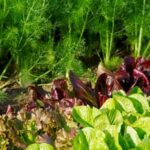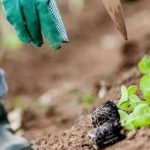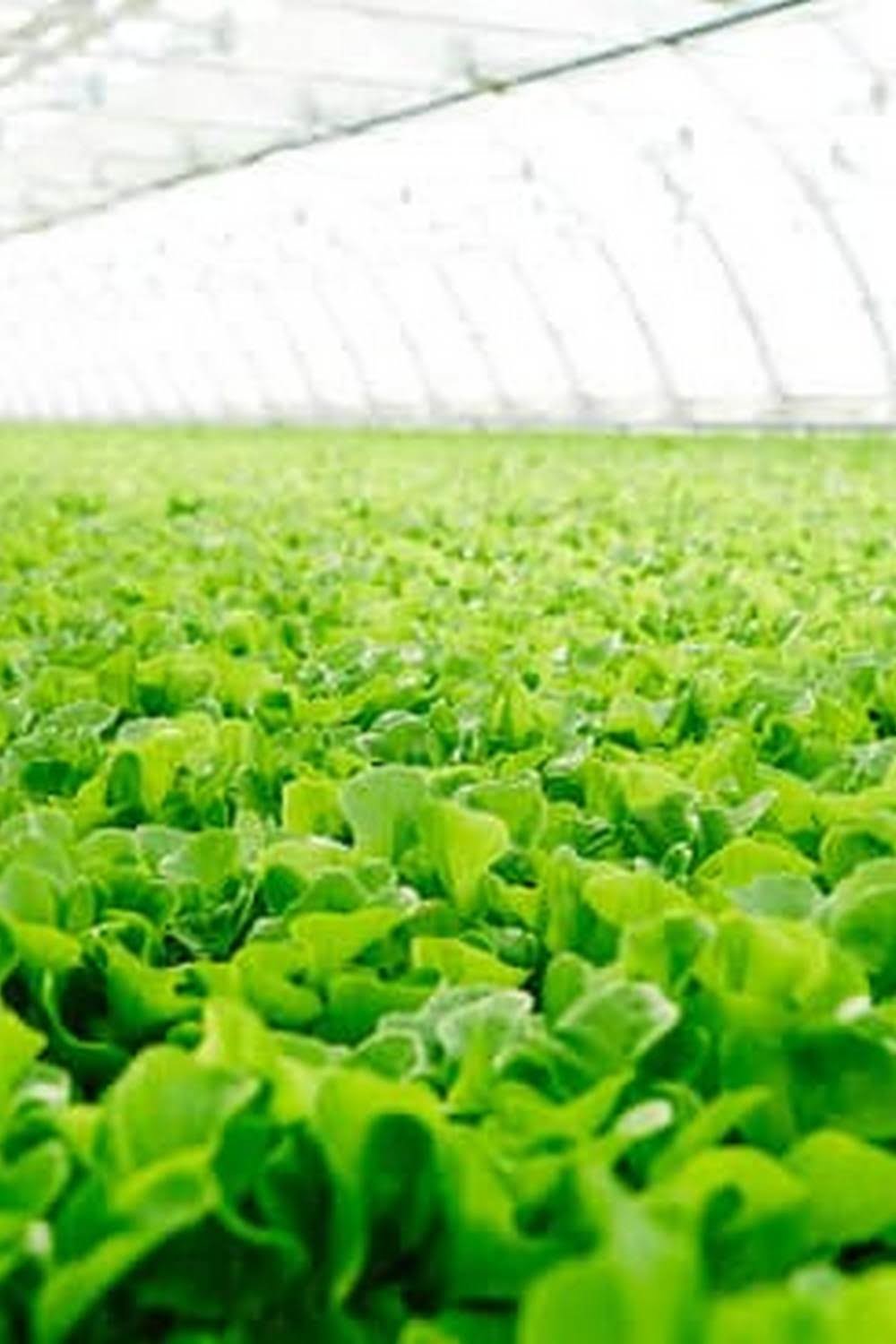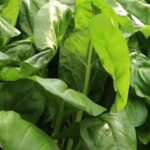Are you interested in starting a vegetable garden, but feel overwhelmed by the prospect of tending to a large plot of land? Pot gardening may be the perfect solution for beginners like you. With its numerous benefits and manageable nature, pot gardening offers a great entry point into the world of gardening. In this article, we will explore why pot gardening is a fantastic option for beginners and how it can provide an accessible and enjoyable experience.
One of the major advantages of pot gardening for beginners is its convenience and accessibility. Unlike traditional gardens planted directly in the ground, pot gardening allows you to have control over your plants’ growing conditions. You can position your pots wherever they will receive the optimal amount of sunlight and easily move them if necessary. This flexibility ensures that even those with limited space or unconventional living arrangements can still indulge in their passion for growing vegetables.
In addition to accessibility, pot gardening is also more manageable for beginners who may not have much experience or time to dedicate to their garden. Maintaining a small number of pots requires less effort and resources compared to tending to a larger garden plot. This makes it easier for new gardeners to learn basic techniques, experiment with different vegetables, and gradually build up their knowledge and skills without feeling overwhelmed.
So if you’re ready to dip your toes into the world of vegetable gardening, join us as we delve into all things pot gardening for beginners. From choosing the right pots and essential tools, to selecting suitable vegetables and caring for your thriving plants – this comprehensive guide will equip you with everything you need to start your own successful pot garden adventure.
Get ready to witness firsthand how this accessible and manageable approach can bring abundant rewards right at your doorstep.
Choosing the Right Pots
When it comes to pot gardening, selecting the right pots is essential for the success of your vegetable garden. There are several factors to consider when deciding on the type of pots to use, including size, drainage, materials, and aesthetic appeal. In this guide, we will explore different types of pots and provide tips on how to choose the right ones for your vegetable gardening needs.
One of the first decisions you’ll need to make is the material of your pots. The three most common materials used for vegetable gardening pots are clay, plastic, and fabric. Clay pots are popular for their aesthetics and breathability but can be heavy and prone to cracking.
Plastic pots are lightweight, affordable, and offer good moisture retention but can become brittle over time. Fabric pots are durable and promote healthy root growth through air pruning but require frequent watering. Consider these pros and cons when making your decision.
Another important factor to consider is pot size. The size of your pot will determine how much soil volume your plants have available for root growth. It’s generally recommended to choose a pot that has a diameter at least 12-18 inches wide for most vegetables. However, larger plants like tomatoes or squash may need even bigger containers. Be sure to check the specific recommendations for each vegetable you plan to grow.
In addition to material and size, proper drainage is crucial for plant health in containers. Ensure that your chosen pots have adequate drainage holes so excess water can escape freely from the bottom. You can also elevate your pots slightly using risers or bricks to further improve drainage.
Considering all these factors will help you choose the right pots for your vegetable garden, setting a solid foundation for successful pot gardening endeavors.
| Pot Material | Pros | Cons |
|---|---|---|
| Clay | Aesthetically pleasing, breathable | Heavy, prone to cracking |
| Plastic | Lightweight, affordable, good moisture retention | Becomes brittle over time |
| Fabric | Durable, air pruning for healthy roots | Requires frequent watering |
Essential Tools and Supplies for Pot Gardening Beginners
Pot gardening beginners will benefit from having the essential tools and supplies on hand to ensure a successful and enjoyable gardening experience. While pot gardening is generally less demanding in terms of equipment compared to traditional ground gardening, there are still a few items that are necessary for optimal plant growth.
One of the must-have tools for pot gardening beginners is a trowel or small shovel. This tool is used for digging holes, loosening soil, and transplanting seedlings. A hand pruner is also essential for maintaining the health and appearance of your plants by removing dead or damaged leaves and branches.
Watering cans or a hose with an adjustable spray nozzle are crucial for watering your potted vegetables properly. Unlike ground gardens, potted plants require more frequent watering as they can dry out quickly. Consider investing in a watering wand attachment for your hose, as it allows you to reach deep into pots without causing damage.
In addition to these tools, there are certain supplies that beginner pot gardeners should have on hand. High-quality potting soil is essential for the success of your plants, as it provides the necessary nutrients and drainage capabilities. Organic fertilizers specifically formulated for vegetable growth are also recommended to promote healthy plant development.
| Tool/Supply | Description |
|---|---|
| Trowel or Small Shovel | Used for digging holes, loosening soil, and transplanting seedlings. |
| Hand Pruner | Used for removing dead or damaged leaves and branches. |
| Watering Can/Hose with Adjustable Spray Nozzle | Used for watering potted vegetables. |
| High-Quality Potting Soil | Provides necessary nutrients and drainage capabilities for plants. |
| Organic Vegetable Fertilizer | Promotes healthy plant development and growth. |
It is worth noting that these are just the basic tools and supplies needed to get started with pot gardening. As a beginner, you may find other tools or supplies that suit your gardening style or specific needs. Remember to consider your budget when purchasing these items, as there are often budget-friendly alternatives available for those on a tight budget. Happy pot gardening.
Best Vegetables to Grow in Pots for Beginners
When it comes to pot gardening, choosing the right vegetables to grow is crucial for beginners. Fortunately, there are many vegetables that are well-suited for growing in pots and are perfect for those just starting out. Here is a list of beginner-friendly vegetables that thrive in pots:
- Tomatoes: Tomatoes are one of the most popular vegetables to grow in pots. They come in a variety of sizes, from large beefsteak tomatoes to small cherry tomatoes. Choose determinate varieties for smaller pots and indeterminate varieties for larger containers.
- Lettuce: Lettuce is an excellent choice for pot gardening as it does not require a lot of space and grows quickly. You can harvest the outer leaves as needed, allowing the plant to continuously produce new ones.
- Peppers: Whether you prefer sweet bell peppers or spicy chili peppers, both types can be grown successfully in pots. Peppers thrive in warm weather and require at least six hours of direct sunlight each day.
Other beginner-friendly vegetables that can be grown in pots include cucumbers, beans, carrots, and herbs such as basil and parsley. These vegetables have relatively shallow root systems and do not require a lot of space to grow.
When selecting which vegetables to grow in pots, it is important to consider your specific climate and growing season. Some vegetables may be better suited for cooler climates while others thrive in warmer temperatures. Researching the specific requirements of each vegetable will help ensure successful growth.
By starting with these beginner-friendly vegetables, new gardeners can gain confidence in their pot gardening skills while enjoying fresh produce right from their own homes. With proper care and attention to each plant’s needs, beginners can experience the joy of growing their own food in pots.
Soil and Fertilizer
Exploring Different Types of Potting Soils
When it comes to pot gardening, choosing the right potting soil is crucial for the success of your vegetable plants. There are several different types of potting soils available, each with their own unique components and benefits.
One popular option is regular potting soil, which is a versatile choice suitable for most vegetables. This type of soil is typically light and well-draining, allowing excess water to flow out freely and preventing root rot. Regular potting soil also contains a good balance of organic matter and nutrients to support healthy plant growth.
Another option to consider is a mix specifically formulated for container gardening. These mixes often contain additional ingredients like perlite or vermiculite to improve drainage and aeration, ensuring that your vegetable plants receive enough oxygen. Container mixes also tend to have slightly higher fertility levels compared to regular potting soil, providing extra nutrients for your plants.
The Importance of Proper Soil Preparation
Before you start planting your vegetable seedlings in pots, it’s essential to properly prepare the soil first. This involves several steps to ensure that your plants have the best growing conditions possible.
Firstly, make sure your chosen pots have adequate drainage holes at the bottom. This will prevent water from pooling in the containers and drowning the roots of your vegetable plants.
Next, fill each pot with enough potting soil so that it reaches about an inch below the rim. Gently press down on the soil to remove any air pockets and create a firm base for planting.
Afterward, it’s recommended to mix in some organic matter into the potting soil, such as compost or well-rotted manure. This will help enrich the soil with additional nutrients and improve its overall structure.
Lastly, consider adding slow-release fertilizer or organic fertilizers like worm castings or fish emulsion to provide a steady supply of nutrients to your vegetable plants throughout the growing season.
Recommendations for Organic Fertilizers
For those who prefer to take an organic approach to fertilizing their vegetable plants in pots, there are several suitable options available.
One popular choice is using compost tea. Compost tea is made by steeping compost or worm castings in water and then straining out the liquid. This nutrient-rich liquid can be poured directly onto the soil around your vegetable plants or used as a foliar spray.
Another organic fertilizer option is seaweed extract. Seaweed extract contains a wide range of essential nutrients that can benefit your plants, including potassium, nitrogen, and trace minerals. Simply dilute the seaweed extract according to the instructions on the packaging and apply it to your vegetable pots.
Additionally, bone meal can be used as an organic source of phosphorus, which is important for root development and overall plant health. Incorporate bone meal into the potting soil before planting or use it as a top dressing around established plants.
By understanding the different types of potting soils available and properly preparing your soil with the right mix of nutrients, you’ll set yourself up for success in your vegetable pot gardening endeavors. Remember that regular monitoring and timely watering will also contribute to healthy plant growth, ensuring a bountiful harvest from your thriving pot garden.
Planting and Caring for Vegetable Seedlings in Pots
Planting and caring for vegetable seedlings is a crucial step in the pot gardening process. By starting with healthy seedlings, you can ensure that your plants have a strong foundation for growth. Here is a step-by-step guide on how to start seedlings in pots:
- Choose the right potting mix: Use a well-draining potting mix specifically designed for containers and vegetables. This will provide the necessary nutrients and drainage for optimal plant growth.
- Fill the pots with soil: Fill each pot with the potting mix, leaving about an inch of space at the top. Gently tamp down the soil to remove any air pockets.
- Sow the seeds: Follow the instructions on the seed packet for proper sowing depth and spacing. Plant the seeds according to these guidelines and cover them with a thin layer of soil.
- Water thoroughly: After sowing the seeds, water your pots thoroughly but gently, taking care not to wash away or displace the seeds. Keep the soil consistently moist throughout germination.
- Provide adequate light and warmth: Place your pots in an area that receives at least 6-8 hours of sunlight per day or use grow lights if natural light is limited. The ideal temperature for most vegetable seedlings ranges from 70-80°F (21-27°C).
- Monitor watering needs: Check the moisture level of your pots regularly by inserting your finger into the soil up to your knuckle. If it feels dry, water thoroughly until you see water draining out of the bottom of the pot.
- Transplanting seedlings into larger pots or containers: Once your seedlings have developed a few true leaves and are approximately 2-3 inches tall, they are ready to be transplanted into larger pots or containers. Carefully lift them from their original pots, taking care not to damage the roots, and gently place them into the new container. Fill around the seedling with additional potting mix and press down gently.
- Watering and feeding: After transplanting, water your seedlings thoroughly and continue to monitor their moisture needs. Additionally, begin fertilizing the plants with a balanced liquid fertilizer every two weeks or as recommended for the specific vegetable variety.
By following these steps, you can ensure that your vegetable seedlings have the best chance of thriving in their pots. Remember to provide adequate care by watering, feeding, and monitoring their growth regularly. This will help you cultivate healthy and productive vegetables in your pot garden.
Managing Pests and Diseases in Pot Gardening for Beginners
Pest and disease management is an essential aspect of pot gardening, especially for beginners. Despite the controlled environment provided by pots, vegetables can still be susceptible to various pests and diseases. In this section, we will explore common pests and diseases that affect vegetables in pots and provide natural and organic methods to prevent and control them.
One of the most common pests that beginners may encounter in their pot gardens is aphids. These small insects feed on the sap of plants, causing damage to leaves and stunting growth. To prevent aphid infestations, regularly inspect your plants for any signs of these pests, such as sticky residue or curled leaves.
Introduce beneficial insects like ladybugs or lacewings into your garden as they are natural predators of aphids. Alternatively, you can create a homemade insecticidal soap by mixing water with a mild detergent and spray it on the affected plants.
Another pest that can affect vegetable plants in pots is the tomato hornworm. These large caterpillars can quickly defoliate tomato plants if not addressed promptly. Handpicking these caterpillars from your plants is an effective method of control. You can also consider planting companion herbs like basil or marigold that repel tomato hornworms. Additionally, diatomaceous earth can be sprinkled around the base of your pots to deter crawling pests like slugs or snails.
In terms of diseases, fungal infections are a common concern in pot gardening. Damp conditions and poor air circulation can promote the development of fungal diseases such as powdery mildew or damping-off disease. To prevent these issues, allow adequate airflow between your pots by spacing them apart properly.
Avoid overhead watering which can increase humidity levels in your garden and instead aim for watering at the base of your plants using a watering can or drip irrigation system. If fungal diseases do occur, removing infected plant parts and applying organic fungicides like neem oil or copper sprays can help manage the problem.
By being proactive and implementing preventative measures, beginners can effectively manage pests and diseases in their pot gardens. Regular monitoring, proper hygiene practices, and utilizing natural controls will go a long way in ensuring the health and vitality of your vegetable plants. Remember to always research specific pests and diseases that are common in your area and consult with local gardening experts for tailored advice.
Harvesting and Enjoying the Fruits (or Veggies) of Your Pot Gardening
Signs and Techniques for Harvesting
Once your vegetables have matured and are ready to be harvested, there are a few signs to look out for. For leafy greens such as lettuce or spinach, harvesting can begin when the outer leaves reach a desirable size. Simply pluck the outer leaves as needed, allowing the inner leaves to continue growing.
For root vegetables like carrots or radishes, gently pull them from the soil when they have reached their full size. Other vegetables such as tomatoes or peppers can be harvested when they are fully ripe and have reached their desired color.
In addition to visual cues, you can also use some techniques to determine if your vegetables are ready for harvest. For example, you can gently squeeze your tomatoes – if they have a slight give without being too soft, they are likely ripe and ready to be enjoyed. Similarly, with fruits like zucchinis or cucumbers, they should feel firm and have a glossy skin.
Tips for Harvesting and Storing
When it comes to harvesting your fresh produce from pots, it’s important to handle them gently to avoid damage. Use pruning shears or scissors for plants with thick stems such as herbs or peppers. For delicate greens or herbs, simply hand-pick them by pinching off the leaves.
After harvesting, it’s important to store your vegetables properly to maintain their freshness. Leafy greens can be stored in sealed plastic bags in the refrigerator for up to a week. Root vegetables should be kept in a cool and dark place with good ventilation. Tomatoes and other fruits should be stored at room temperature away from direct sunlight.
Ideas for Cooking and Enjoying Your Harvested Produce
One of the greatest joys of pot gardening is being able to enjoy the fruits (or veggies) of your labor in delicious meals. There are countless ways to incorporate your freshly harvested produce into your everyday cooking. For example, you can use your homegrown tomatoes to make fresh salsa or caprese salad. You can sauté a variety of vegetables to create a flavorful stir-fry or roast them in the oven with some herbs for a simple side dish.
If you have an abundance of herbs such as basil or mint, you can make your own herb-infused oils or teas. Or why not try pickling some of your homegrown cucumbers or radishes? The possibilities are truly endless.
Whether it’s creating a vibrant salad, preparing a hearty soup, or experimenting with new recipes, pot gardening allows you to savor the flavors of freshly picked vegetables right in your own kitchen. So go ahead and get creative – and don’t forget to share your culinary masterpieces with friends and family.
Conclusion
In conclusion, pot gardening offers endless possibilities for beginners who are eager to embark on their gardening journey. Not only is pot gardening more accessible and manageable for new gardeners, but it also provides numerous benefits that make it an ideal option.
By choosing the right pots, acquiring essential tools and supplies, selecting suitable vegetables, understanding soil and fertilizer basics, learning proper planting and caring techniques, managing pests and diseases diligently, and finally harvesting the fruits (or veggies) of their pot gardening efforts, beginners can enjoy a rewarding experience.
One of the key advantages of pot gardening for beginners is its accessibility. Unlike traditional in-ground gardening, pot gardening allows individuals with limited space or mobility issues to still pursue their passion for growing vegetables. With a variety of pots available in different sizes and materials, beginners have the flexibility to adapt their garden to their own unique circumstances. Additionally, pot gardening offers better control over soil quality and moisture levels, ensuring optimal growing conditions for plants.
Furthermore, pot gardening is a stepping stone for beginners to explore a wide range of possibilities. As they gain confidence and experience with basic cultivation techniques, they can gradually expand their garden by experimenting with different types of plants or even trying out more advanced techniques like companion planting or vertical gardening. The possibilities are limitless.
To continue learning and thriving in the world of pot gardening, beginners are encouraged to join online communities where they can share experiences and knowledge with other enthusiasts. Through these platforms, they can seek guidance on specific challenges they may encounter along the way or simply find inspiration from experienced gardeners. The support and camaraderie found within these communities can greatly enhance the satisfaction derived from pot gardening.
Frequently Asked Questions
What are the easiest vegetables to grow in pots?
Some of the easiest vegetables to grow in pots are leafy greens such as lettuce, spinach, and kale. These vegetables have shallow root systems and don’t require a lot of space to grow. They can be easily grown in small pots or even window boxes.
Other easy vegetables to grow in pots include herbs like basil, parsley, and cilantro. These herbs thrive in containers and can be harvested continuously throughout the growing season.
What vegetables can you start in pots?
There are several vegetables that can be started in pots before transplanting them into the ground. Tomatoes are one such vegetable that is commonly started in pots.
They require a longer growing season than many other vegetables, so starting them indoors a few weeks prior to the last frost date allows them to grow larger and healthier before being transplanted outside. Peppers, both sweet and hot varieties, also do well when started in pots as they prefer warmer temperatures for germination.
Which vegetables are best to grow in pots?
The best vegetables to grow in pots are those that have smaller root systems or those that can adapt well to container gardening conditions. Root vegetables like carrots or potatoes may not be ideal for growing in pots because they need more room for their roots to develop properly. However, plants like cherry tomatoes, cucumbers, zucchini, and beans can all be successfully grown in large containers with proper support and sufficient soil depth.
Additionally, compact varieties of certain vegetables such as dwarf varieties of lettuce or compact bush varieties of peas can also thrive in pots due to their smaller size requirements. It’s important to consider the overall size of the mature plant when selecting which vegetables to grow in pots, as some may require larger containers than others.

If you’re looking to get into vegetable gardening, or are just looking for some tips on how to make your current garden better, then you’ve come to the right place! My name is Ethel and I have been gardening for years. In this blog, I’m going to share with you some of my best tips on how to create a successful vegetable garden.





